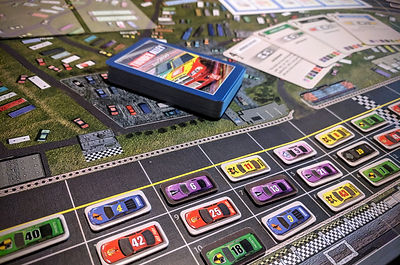top of page
Mechanisms
Scenario, Mission or Campaign Game
A game system that can be applied to a variety of different maps, starting resources and positions, and even different win and loss conditions. These variable conditions can be assembled into a broader narrative or campaign, or they can be entirely disconnected from one another.
Selection Order Bid
Selection Order Bid is a form of multiple-lot auction in which players are not directly bidding on the lots themselves, but the order in which they’ll draft the lots. As the bid increases, players may pass and accept a later place in the order. In some cases, players must pay their entire current bid (an all-pay mechanism), and in others they may recover some of their bid.

Storytelling
In storytelling games, players are provided with conceptual, written, or pictorial stimuli which must be incorporated into a story of the players' creation. Once Upon a Time uses a selection of words while Rory's Story Cubes include ambiguous symbols. Some games like Snake Oil and Big Idea prompt players to pitch a product, which frequently takes the form of a brief story or vignette.

Tags
Game objects, typically cards, have icons or other identifiers that identify them as belonging to specific categories. These tags may trigger special effects and/or have values and meaning that can vary, even within the scope of a single play. Tags are additional parameters on top of the base meaning of the game element, so tags represent a means of coupling the game element with more mechanisms and systems. Tags are also bookmarks that can reference a variable set of possible rules that are encoded elsewhere, so tags are also a means to modularize, or uncouple, game triggers and game effects.
Take That
Competitive maneuvers that directly target one opponent's progress toward victory, but do not directly eliminate any characters or components representing the opponent. Such mechanics include stealing, nullifying, or force-discarding of one opponent's resources, actions, or abilities. A take-that maneuver often results in a dramatic change in the players' position of power over a relatively short period of time.
Tech Tree
During the course of the game, new Actions become available to specific players, or existing Actions are improved. These are often themed as Technologies, but do not need to be.
Sometimes this is expressed as a Tree, where gaining one Tech unlocks multiple other Techs. Or it can be a track, where advancing along the track unlocks upgraded or new Actions.
bottom of page



